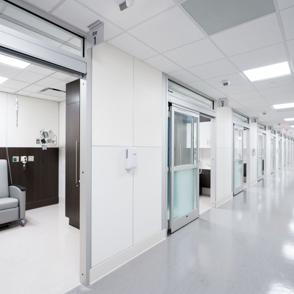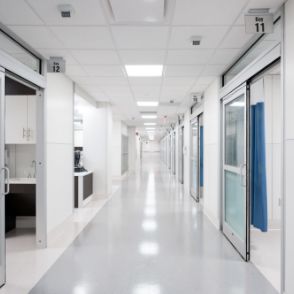In the first of a two-part series looking at big ideas in healthcare that are gaining traction in 2021, we look at the circular economy.
We are all familiar with the idea of a throwaway society, but how would it be if instead of disposing of outdated, damaged or redundant things, we could reuse or share them with others? That in short is the circular economy.
This is a relatively new concept in the field of sustainability that focuses on circulating items such as machinery and IT– either as functioning things in their entirety or in repurposed parts. Circulation could be within an institution such as a hospital or around an entire sector such as healthcare or beyond.
The bottom line is that things get used as efficiently as possible for as long as possible.
So, what exactly is it all about and how does it look in the healthcare sector?
About the circular economy
The circular economy is about recovering and re-using physical resources, rather than disposing of them.
Despite its name, the primary driver for the concept has not been economic. Instead, it is closely linked to the sustainability agenda as the world seeks more environmentally friendly ways to deal with physical goods and structures to deliver benefits for the planet and people.
According to a WHO report: “The concept of a circular economy offers an avenue to sustainable growth, good health and decent jobs, while saving the environment and its natural resources.” It describes this as a major opportunity to yield substantial health benefits, such as direct benefits to healthcare systems and indirect benefits from reducing negative environmental impacts.
How the circular economy fits with healthcare
What would those direct benefits for healthcare systems be? One important area is in recovering and re-using items such as hospital equipment. This works at scale, going beyond simply refurbishing a piece of kit within a single facility to multiple hospitals sharing, leasing, swapping or selling resources.
Adopting the idea is seen as one way to ease growing pressure on healthcare systems, and that pressure is intense. In a non-COVID year in England alone, there are 16 million hospital admissions and 10 million operations. An ageing population and other factors are expected to swell those numbers. The circular economy could save money and better serve patients by making facilities available that would otherwise be scarce or unaffordable.
Online marketplaces have already sprung up in the UK and US where hospitals can find equipment such as CT scanners that are surplus to requirements in other facilities.
While healthcare institutions are typically risk averse, pressure on facilities and the need to save money are opening up new ways of sourcing. In a recent survey by Philips Healthcare, 60 per cent of UK stakeholders said they would be willing to explore the possibility of refurbished systems and new business models.
Financial savings and capacity boosting aside, hospitals also have a role to play in realising the macro benefits of the circular economy, notably in sustainability. NHS England has a robust commitment to that agenda with its Greener NHS programme and is working towards net carbon zero.
How modular hospital structures support the circular economy
Modular building methods such as healthcare pods can help. Their modular design means they can be reconfigured and re-sited with ease.
That built-in adaptability is key to the circular economy, as Seigo Robinson from research firm Oakdene Hollins told The Guardian in a recent roundtable session. Healthcare equipment needs to be properly designed for a circular economy, he says, meaning that new products and structures are optimised for serviceability, configuration and reusability. At Architectural Wallsz, we are proud that the systems we provide to hospitals meet these criteria.
Healthcare pods are purpose-designed to convert existing hospital rooms and buildings as well as to create entirely new healthcare facilities in open spaces to meet emergency requirements.
Solutions, such as those we supply, range from a single acute medical care pod to large-scale healthcare and nursing pod installations.
Modular hospital rooms are rapid to assemble and include built-in air filtration, plumbing and plug-and-play technology. Those built-in systems together with easy-to-clean surfaces enable efficient maintenance.
Pods can be reconfigured at any time to suit the changing requirements of hospitals or healthcare facilities, and they can be dismantled and moved to other locations on or off site.
In summary
The circular economy is already making inroads into healthcare, driven by the need for cost and efficiency savings. The potential for it to go much further is exciting.
By changing ideas about traditional hospital design, construction and fitout, it is an idea that could dramatically improve patient and staff wellbeing. What’s more, in a world where paying lip service to environmental concerns is no longer sufficient, embracing the circular economy could help healthcare managers massively cut waste in buildings, interiors and equipment.






Sorry, the comment form is closed at this time.